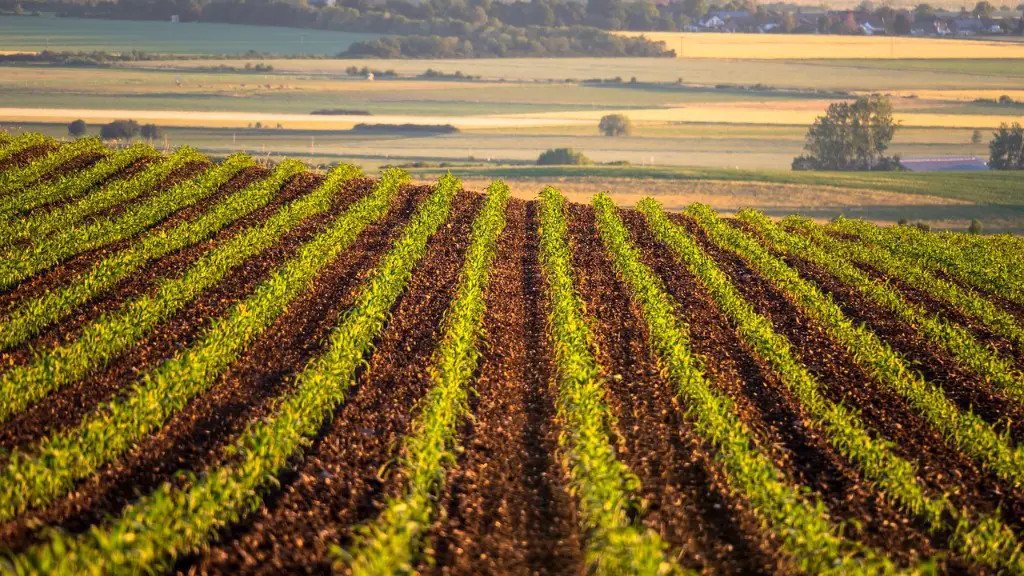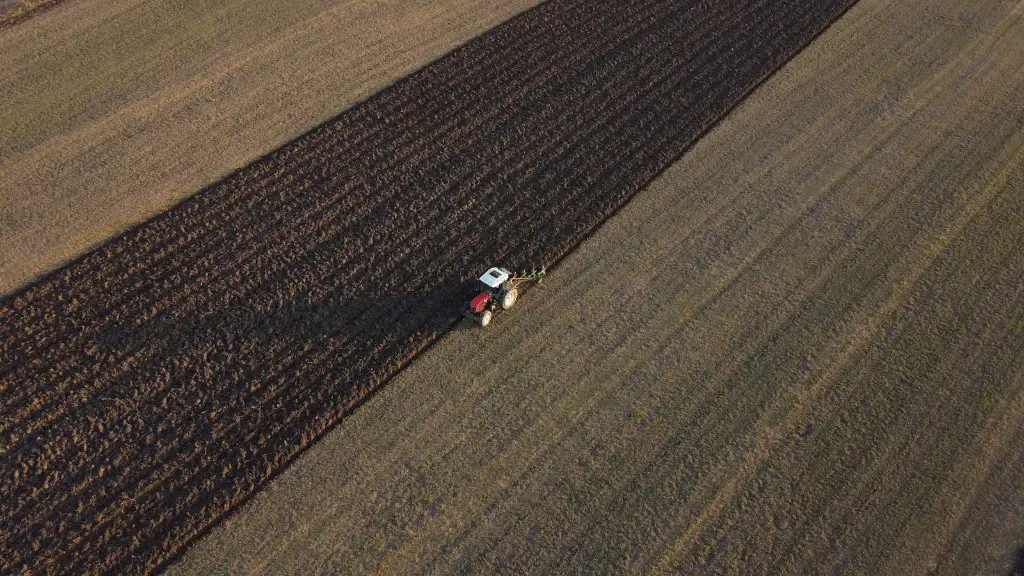Between 1950 and 1984, India’s food grain production grew from 50 million tonnes to 190 million tonnes. The population grew from 350 million to 900 million during the same period. The terms ‘Green Revolution’ and ‘White Revolution’ were coined in 1968 by William Gaud, the then Director of the United States Agency for International Development (USAID).. Norman Borlaug, an American agronomist is often referred to as the father of the Green Revolution. India’s Green Revolution is often dated back to 1967 when the high-yielding variety (HYV) seeds, along with the system of irrigation, synthetic fertilizers and pesticides were introduced in the country. The success of the Green Revolution in India is often attributed to the extension services provided by the central and state governments.
The Green Revolution has had a profound impact on agriculture in India. It has led to an increase in crop yields and a decrease in the amount of land needed to grow food. It has also helped to create a more efficient and productive agricultural sector.
How did the Green Revolution change agriculture?
The use of genetically improved seeds was a key technological innovation that transformed agriculture during the Green Revolution. These seeds developed hybrid crops that were more apt to harsh climates, more responsive to fertilizers, and overall more high-yielding and efficient. This made it possible for farmers to increase their production and meet the demands of a growing population.
The Green Revolution was a movement that increased agricultural productivity worldwide, beginning in the 1940s. It increased the availability and use of fertilizers, weedicides, and pesticides to reduce any damage or loss to the crops. It also helped in promoting commercial farming in the country with the introduction of machinery and technology like harvesters, drills, tractors, etc. The Green Revolution led to an increase in food production, which helped to improve the standard of living for many people around the world.
What was the impact of Green Revolution on Indian economy
The Green Revolution was a huge success in India, vastly improving the inland irrigation systems around farms and introducing new technology and machinery like tractors, harvesters, and drills. This helped immensely to promote commercial farming in the country. The results were impressive, with India becoming one of the world’s leading agricultural producers.
The most important accomplishment of the green revolution is the fact that India has become self-sufficient in the production of food grains. There is a significant increase in land yield concerning food grains brought about by the use of new technologies. The Green Revolution has helped India to achieve food security and has also boosted the economy.
How much did the Green Revolution impact agriculture?
The green revolution was a period of increased agricultural productivity that occurred throughout the world in the mid-20th century. After the green revolution, the production of cereal crops tripled with only a 30% increase in the land area cultivated. This came true all over the world, with a few exceptions. In addition, there were significant impacts on poverty reduction and lower food prices.
The Green Revolution was a game-changer for farmers in Asia, boosting yields and incomes. But now, global warming is raising sea levels and inundating coastal areas, posing a new threat to agriculture.
Farmers will need to adapt their practices to deal with the increased flooding and salinity that come with rising seas. This will be a big challenge, but it’s one that we must meet if we’re going to continue to feed the world’s growing population.
Which crops were affected by the Green Revolution in India?
The methods adopted included the use of high-yielding varieties (HYVs) of seeds with modern farming methods. The production of wheat has produced the best results in fueling self-sufficiency of India. India is now the second-largest producer of wheat in the world. The average yield of wheat has increased from 10.5 million tons in 1950-51 to 85.94 million tons in 2013-14.
India has made a phenomenal achievement in terms of the Green Revolution. It has pulled millions of people out of poverty and hunger and provided them with unprecedented levels of food security. The Green Revolution has been a boon for India and has helped it become a leading economic power in the world.
How did Green Revolution benefit and harm the farmers
The Green Revolution was beneficial because it helped produce more food and prevented the starvation of many people. It also resulted in lower production costs and sale prices of produce. Although it had several benefits, the Green Revolution also had some negative effects on the environment and society. One of the negative effects was that it led to the use of more chemicals and pesticides, which can pollute the environment. Another negative effect was that it resulted in the loss of traditional knowledge about agriculture and farming.
The Green Revolution in Asia was made possible by the introduction of more productive dwarf varieties of wheat and rice. This led to increased food production and helped to alleviate the severe deficit of food grains that India faced in the 1960s. The Green Revolution had a positive impact on food production and helped to improve the overall food security situation in the region.
What is new Green Revolution in India?
The New Green Revolution: A Just Transition to Climate-Smart Crops is an ORF Issue Brief authored by Ria Kasliwal. In it, Kasliwal discusses the potential for India to lead the way in developing climate-smart crops that are more resilient to the effects of climate change. She argues that such a transition is necessary in order to ensure food security for the country’s growing population. Kasliwal also outlines some of the challenges that will need to be addressed in order for this transition to be successful.
The Green Revolution in India has been successful in increasing food production and reducing hunger and poverty. However, there are some criticisms of the Green Revolution, such as the increased use of chemical fertilizers and pesticides, which can have negative environmental effects. Overall, the Green Revolution has been a positive force for India, and has helped to improve the lives of many people.
Did Green Revolution solve the food crisis in India
The Green Revolution was a time when many developing countries took steps to increase the amount of grains or other items they produced. This was done by using many modern technologies, such as multiple cropping, HYV seeds, electric run tube wells, etc. This helped solve the problem of food crisis.
Over adoption of agricultural technologies by farmers can lead to a number of negative impacts, including loss of soil fertility, erosion of soil, soil toxicity, diminishing water resources, pollution of underground water, and increased incidence of human and livestock diseases. Additionally, over adoption of agricultural technologies can contribute to global warming. Therefore, it is important for farmers to carefully consider the possible negative impacts of agricultural technologies before adopting them.
Which crop was benefited most by green revolution in India?
The Green Revolution led to an increase in wheat production in many parts of the world. This increase in production was due to the adoption of new technology and better farming practices. The Green Revolution had a positive impact on wheat-growing areas, as it led to higher yields and better quality wheat.
It is indeed sad that the factors driving agriculture in India are based on failed land reforms, fragmented landholding patterns, uneconomical farm size, government apathy and associated policy paralysis, unexamined technology transfer, unregulated and unmonitored inputs usage and mismanaged marketing and payment system. All these factors have contributed to the declining profitability of farming and the overall stagnation in the sector. In the absence of any major initiatives from the government to address these issues, it is unlikely that the situation will improve significantly in the near future.
Warp Up
The Green Revolution in India refers to a period of time when agriculture in India changed to favor the use of high-yielding varieties of seeds, irrigated land, and the use of chemical fertilizers and pesticides. This period saw an increase in agricultural productivity in India.
The Green Revolution has changed agriculture in India by making it more efficient and productive. It has also helped to improve the quality of life for farmers and their families.





